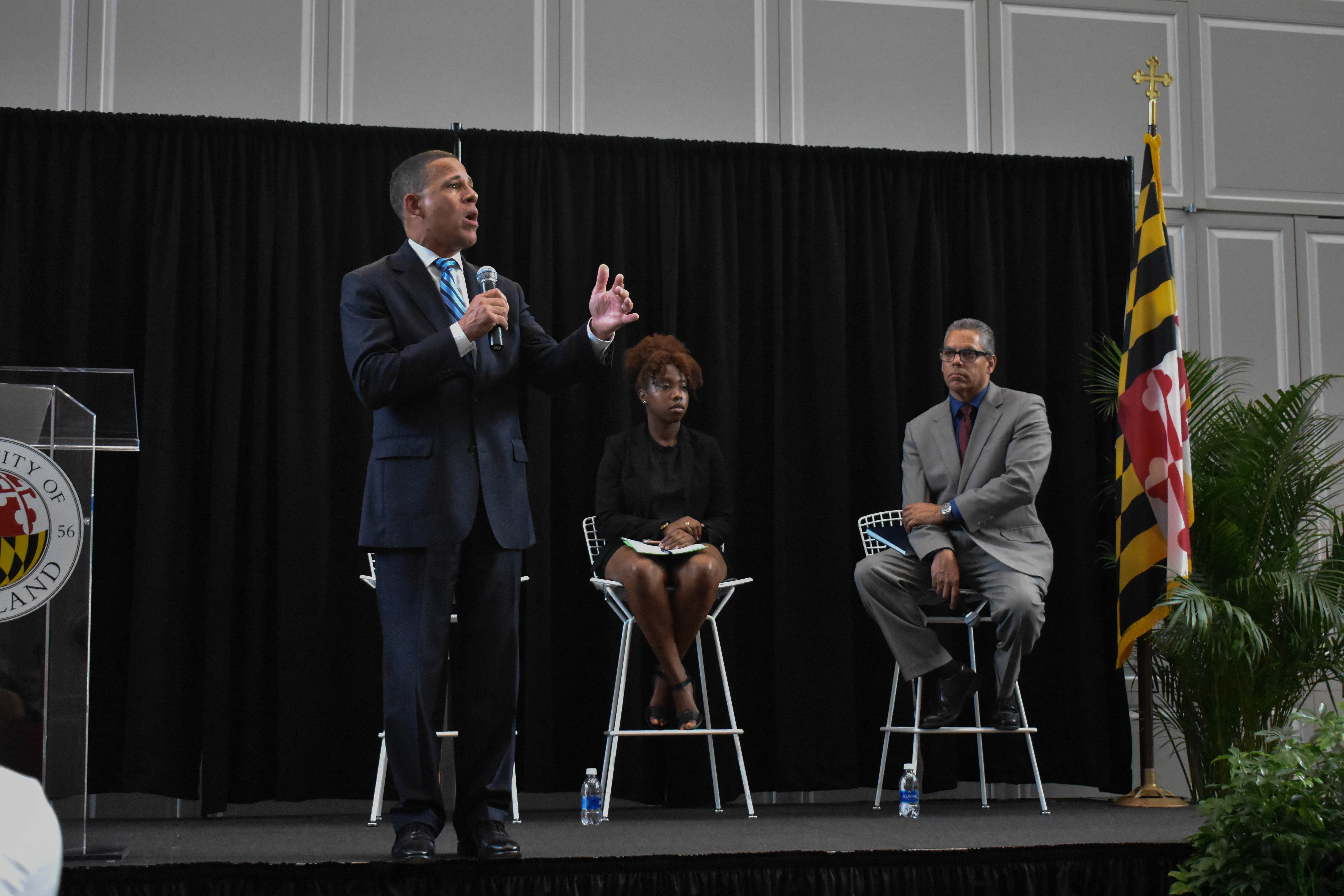U.S. Rep. Anthony Brown (D-Md.) helped introduce a bill that could help some students nationwide afford a college degree.
America’s College Promise Act of 2017 — which would provide two years of community college for free and an affordable pathway for low-income students to a four-year college degree if passed — was introduced Thursday in the House by five representatives including Brown.
Under this act, the federal government would front 75 percent of the cost, while states would pay for the remaining 25 percent in order to eliminate community college tuition and fees for students. Students are required to attend school at least part-time and “maintain satisfactory academic progress at a minimum,” according to a fact sheet accompanying a press release from the Committee on Education and the Workforce Democrats.
These benefits are not limited to first-time students, according to the release.
[Read more: U.S. Rep Anthony Brown announces plans for a bill to punish hate speech at universities]
But in order to make this work, Congress would likely have to raise taxes, cut another type of spending or increase the size of the federal deficit, said Cindy Clement, director of undergraduate studies in economics.
“Money doesn’t grow on trees,” she said. “Any one piece of legislation by itself doesn’t tell you the whole story, we need to look at the bigger context.”
For states to be awarded government funds, the bill requires that they outline evidence-based reforms community colleges would undertake to improve graduation completion rates.
Clement emphasized the importance of this part of the bill.
“Just because students can get into a college today [and] access it by being able to pay the bills, doesn’t mean they can finish,” she said.
[Read more: Gov. Larry Hogan wants to cap tuition increases at University System of Maryland schools]
This legislation is part of House Democrats’ Aim Higher initiative, which focuses on providing all students with access to a more affordable and meaningful degree that leads to a well-paying job, the press release reads. For every dollar the state invests to waive community college tuition and fees for eligible students the U.S. government will match it with $3.
“Community colleges are pathways to the middle class for millions of young people graduating high school, workers looking to get new skills and veterans transitioning back to civilian life,” Brown said in a press release. “In America, a quality education should be a right for everybody willing to work for it.”
Low-income students who choose to attend Minority-Serving Institutions or Historically Black Colleges and Universities, as well as Hispanic-Serving Institutions and Asian American and Native American Pacific Islander-Serving Institutions, will have a large portion of tuition and fees covered by this act for either the first or last two years of their college career.
The language of the bill is unclear, said Lesley Turner, an assistant professor of economics. And that could make a huge difference as to which students are being targeted.
If it’s a first-dollar program, the bill would cover tuition and then students would receive any grants they’re eligible for, Turner said. If students are eligible for the maximum Pell Grant, which is $5,920 for the 2017-2018 award year, they would get that on top of receiving tuition.
But if it’s a last-dollar program, it would cover any tuition not covered by federal or other grants and would target middle-income students who don’t qualify for a significant Pell Grant or don’t qualify for it at all.



